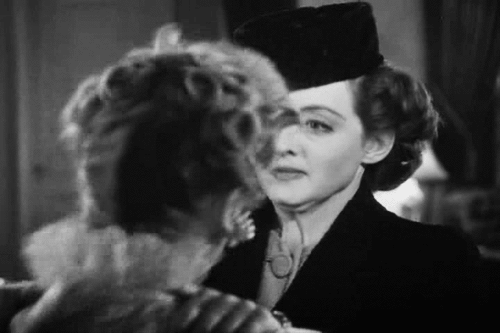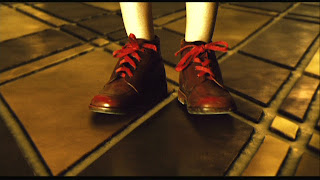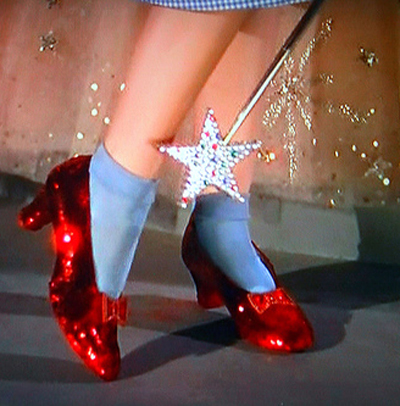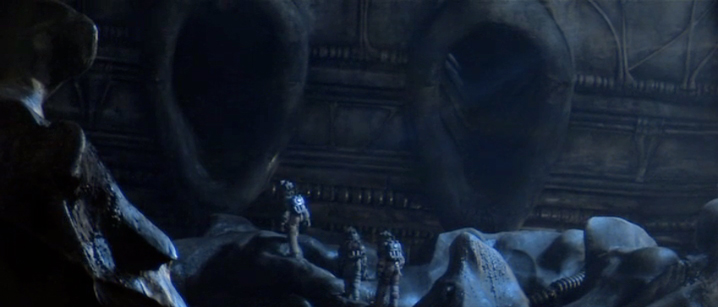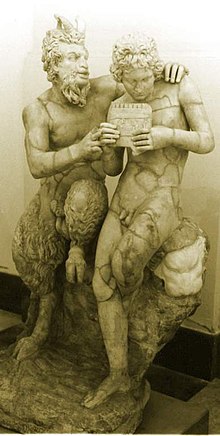- Joined
- Dec 12, 2009
- Messages
- 31,514
- Reaction score
- 9,066
NOTE to NON-MEMBERS: Interested in joining the SHERDOG MOVIE CLUB? Shoot me a PM for more info.
Here's a quick list of all movies watched by the SMC.
Tufts wanted to explore Adult Fairy Tales. She hit bullseye with this one.

Guillermo del Toro was born October 9, 1964 in Guadalajara Jalisco, Mexico. Raised by his Catholic grandmother, del Toro developed an interest in filmmaking in his early teens. Later, he learned about makeup and effects from the legendary Dick Smith (Exorcisten(1973)) and worked on making his own short films. At the age of 21, del Toro executive produced his first feature, Dona Herlinda and Her Son (1986). Del Toro spent almost 10 years as a makeup supervisor, and formed his own company, Necropia in the early 1980s. He also produced and directed Mexican television programs at this time, and taught film.
Del Toro got his first big break when Cronos (1993) won nine Ariel Awards (the Mexican equivalent of the Oscars), then went on to win the International Critics Week Prize at Cannes. Following this success, del Toro made his first Hollywood film, Mimic (1997), starring Mira Sorvino.
Del Toro had some unfortunate experiences working with a demanding Hollywood studio on Mimic (1997), and returned to Mexico to form his own production company, The Tequila Gang.
Next for del Toro, was The Devil's Backbone (2001), a Spanish Civil War ghost story. The film was hailed by critics and audiences alike, and del Toro decided to give Hollywood another try. In 2002, he directed the Wesley Snipes vampire sequel, Blade II (2002).
On a roll, Del Toro followed up Blade II (2002) with another successful comic-book inspired film, Hellboy (2004), starring one of Del Toro's favorite actors, Ron Perlman.
Del Toro is divorced, has a daughter and a son and lives in Los Angeles and Toronto.
Film Overview
Premise: In the falangist Spain of 1944, the bookish young stepdaughter of a sadistic army officer escapes into an eerie but captivating fantasy world.
Budget: $19 million
Box Office: $88.3 million
Trivia
(courtesy of IMDB)
* Guillermo del Toro repeatedly said "no" to Hollywood producers, in spite of being offered double the budget provided the film was made in English. He didn't want any compromise in the storyline to suit the "market needs".
* Guillermo del Toro is famous for compiling books full of notes and drawings about his ideas before turning them into films, something he regards as essential to the process. He left years worth of notes for this film in the back of a cab, and when he discovered them missing, he thought it was the end of the project. However, the cab driver found them and, realizing their importance, tracked him down and returned them at great personal difficulty and expense. Del Toro was convinced that this was a blessing and it made him ever more determined to complete the film.
* The English subtitles were translated and written by Guillermo del Toro himself. He no longer trusts translators after having encountered problems with his previous subtitled movies.
* Guillermo del Toro gave up his entire salary, including back-end points, to see this film become realized. To this day, he believes it was worth it.
* It took five hours for Doug Jones to get into The Pale Man costume. Once he was in it, he had to look out the nose holes to see where he was going.
* The Faun addresses Ofelia with the pronoun "vos", which is archaic in Castilian Spanish but was once used to refer to someone for whom the speaker has great respect.
* Sergi López, who plays Captain Vidal, was considered a melodramatic or comedic actor, and the Madrid-based producers told Guillermo del Toro: "You should be very careful because you don't know about these things because you're Mexican, but this guy is not going to be able to deliver the performance". Del Toro replied "Well, it's not that I don't know, it's that I don't care".
* While some viewers believe Ofelia's eating the grapes in the Pale Man's den to be something of a "too dumb to live" moment for the young heroine, it would actually seem to be a reference to what turns out to be her ultimate virtue: Courageous disobedience. According to Guillermo del Toro this theme is why the movie is set against the backdrop of falangist Spain (where disobeying the fascist regime was dangerous), and the final test of character for the princess confirms the importance of disobedience as well.
Of course, Ofelia hadn't eaten for a day, and was likely very hungry, which probably didn't help.
Members:
@europe1
@MusterX
@Scott Parker 27
@the muntjac
@Cubo de Sangre
@sickc0d3r
@chickenluver
@FrontNakedChoke
@AndersonsFoot
@Tufts
@Coolthulu
Here's a quick list of all movies watched by the SMC.
Tufts wanted to explore Adult Fairy Tales. She hit bullseye with this one.

Our Director
Guillermo del Toro

Guillermo del Toro

Guillermo del Toro was born October 9, 1964 in Guadalajara Jalisco, Mexico. Raised by his Catholic grandmother, del Toro developed an interest in filmmaking in his early teens. Later, he learned about makeup and effects from the legendary Dick Smith (Exorcisten(1973)) and worked on making his own short films. At the age of 21, del Toro executive produced his first feature, Dona Herlinda and Her Son (1986). Del Toro spent almost 10 years as a makeup supervisor, and formed his own company, Necropia in the early 1980s. He also produced and directed Mexican television programs at this time, and taught film.
Del Toro got his first big break when Cronos (1993) won nine Ariel Awards (the Mexican equivalent of the Oscars), then went on to win the International Critics Week Prize at Cannes. Following this success, del Toro made his first Hollywood film, Mimic (1997), starring Mira Sorvino.
Del Toro had some unfortunate experiences working with a demanding Hollywood studio on Mimic (1997), and returned to Mexico to form his own production company, The Tequila Gang.
Next for del Toro, was The Devil's Backbone (2001), a Spanish Civil War ghost story. The film was hailed by critics and audiences alike, and del Toro decided to give Hollywood another try. In 2002, he directed the Wesley Snipes vampire sequel, Blade II (2002).
On a roll, Del Toro followed up Blade II (2002) with another successful comic-book inspired film, Hellboy (2004), starring one of Del Toro's favorite actors, Ron Perlman.
Del Toro is divorced, has a daughter and a son and lives in Los Angeles and Toronto.
Our Stars
Ivana Baquero (girl grew)

Sergi Lopez

Ivana Baquero (girl grew)

Sergi Lopez

Film Overview
Premise: In the falangist Spain of 1944, the bookish young stepdaughter of a sadistic army officer escapes into an eerie but captivating fantasy world.
Budget: $19 million
Box Office: $88.3 million
Trivia
(courtesy of IMDB)
* Guillermo del Toro repeatedly said "no" to Hollywood producers, in spite of being offered double the budget provided the film was made in English. He didn't want any compromise in the storyline to suit the "market needs".
* Guillermo del Toro is famous for compiling books full of notes and drawings about his ideas before turning them into films, something he regards as essential to the process. He left years worth of notes for this film in the back of a cab, and when he discovered them missing, he thought it was the end of the project. However, the cab driver found them and, realizing their importance, tracked him down and returned them at great personal difficulty and expense. Del Toro was convinced that this was a blessing and it made him ever more determined to complete the film.
* The English subtitles were translated and written by Guillermo del Toro himself. He no longer trusts translators after having encountered problems with his previous subtitled movies.
* Guillermo del Toro gave up his entire salary, including back-end points, to see this film become realized. To this day, he believes it was worth it.
* It took five hours for Doug Jones to get into The Pale Man costume. Once he was in it, he had to look out the nose holes to see where he was going.
* The Faun addresses Ofelia with the pronoun "vos", which is archaic in Castilian Spanish but was once used to refer to someone for whom the speaker has great respect.
* Sergi López, who plays Captain Vidal, was considered a melodramatic or comedic actor, and the Madrid-based producers told Guillermo del Toro: "You should be very careful because you don't know about these things because you're Mexican, but this guy is not going to be able to deliver the performance". Del Toro replied "Well, it's not that I don't know, it's that I don't care".
* While some viewers believe Ofelia's eating the grapes in the Pale Man's den to be something of a "too dumb to live" moment for the young heroine, it would actually seem to be a reference to what turns out to be her ultimate virtue: Courageous disobedience. According to Guillermo del Toro this theme is why the movie is set against the backdrop of falangist Spain (where disobeying the fascist regime was dangerous), and the final test of character for the princess confirms the importance of disobedience as well.
Of course, Ofelia hadn't eaten for a day, and was likely very hungry, which probably didn't help.
Members:
@europe1
@MusterX
@Scott Parker 27
@the muntjac
@Cubo de Sangre
@sickc0d3r
@chickenluver
@FrontNakedChoke
@AndersonsFoot
@Tufts
@Coolthulu


